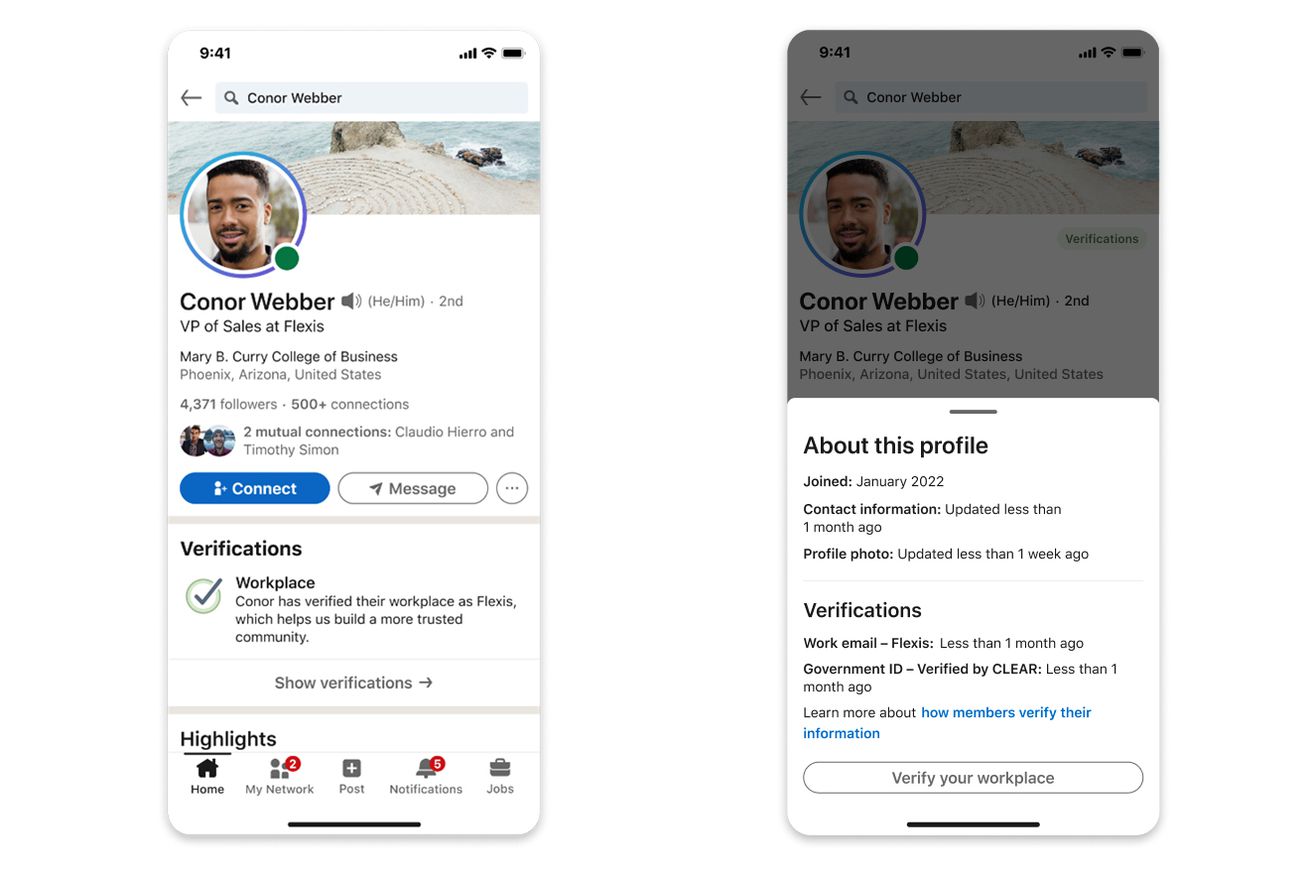
LinkedIn gets a free verified badge that lets you prove where you work
Microsoft-owned LinkedIn is rolling out a free verification system that will allow users to prove their identity and where they work. The verification options include the ability to use CLEAR to prove your identity, verification of your workplace through an email address, and Microsoft’s Entra verified ID platform to obtain digital workplace IDs for free.
Unlike Instagram, Facebook, or Twitter, you won’t need to pay to get verifications that will show up on your LinkedIn profile. You can verify your workplace just by using a company-issued email address or through Microsoft Entra if your organization already uses Entra.
If you want to verify your own identity, then LinkedIn has partnered with CLEAR to allow you to securely confirm your identity. If you pay for CLEAR, then you’ll be able to display that your identity is verified on your LinkedIn profile, thanks to a US government-issued ID and US phone number.
LinkedIn will highlight verifications with a green and blue check on profiles, but it doesn’t appear to be going beyond that to offer a badge that appears next to your name throughout LinkedIn.
The verification through company email is available now to all LinkedIn users, provided they work at more than 4,000 companies that are supported. The Microsoft Entra verification is rolling out at the end of April initially to 2 million LinkedIn members.
As more organizations make use of cloud technology and hiring has often taken place remotely over the past few pandemic years, the need for online verification of credentials is clear. Microsoft has been working on its own Entra Verified ID system that’s now being used by LinkedIn, and it’s all based on open standards, so it can work across a variety of HR and identity systems.
“Authenticity online has never been more important,” says Alex Weinert, director of identity security at Microsoft, in an interview with The Verge. “We’ve seen a steady uptick in fraudulent presentations with people pretending to be people they’re not in all kinds of different forms. You want to know really that if you interact with somebody who says they’re employed by a certain company or represent a certain company that you can trust who they say they are. The need for that is pretty clear.”
Microsoft Entra goes beyond just LinkedIn, too. Digital verified IDs can be used for background checks, loan applications, rewards programs, and much more. The system should speed up onboarding into new jobs, particularly as you can verify your skills and qualifications and use that across multiple jobs and companies to hopefully avoid that rigorous security check when you first join a company.
The system is backed by a decentralized identity and a trust model that involves an issuer, a holder, and a verifier. Organizations can issue cryptographically signed digital IDs, which employees can then use to prove they work at a company and get basic discounts or to even prove they’re employed to get approved for a loan. Microsoft wants to push this type of system to even more places where verification and trust are needed.
“This is just the beginning,” says Joy Chik, president of identity and network access at Microsoft. “Verified ID credentials can increase trust, authenticity, and verifiability while reducing cost, time, and friction in many scenarios.”

